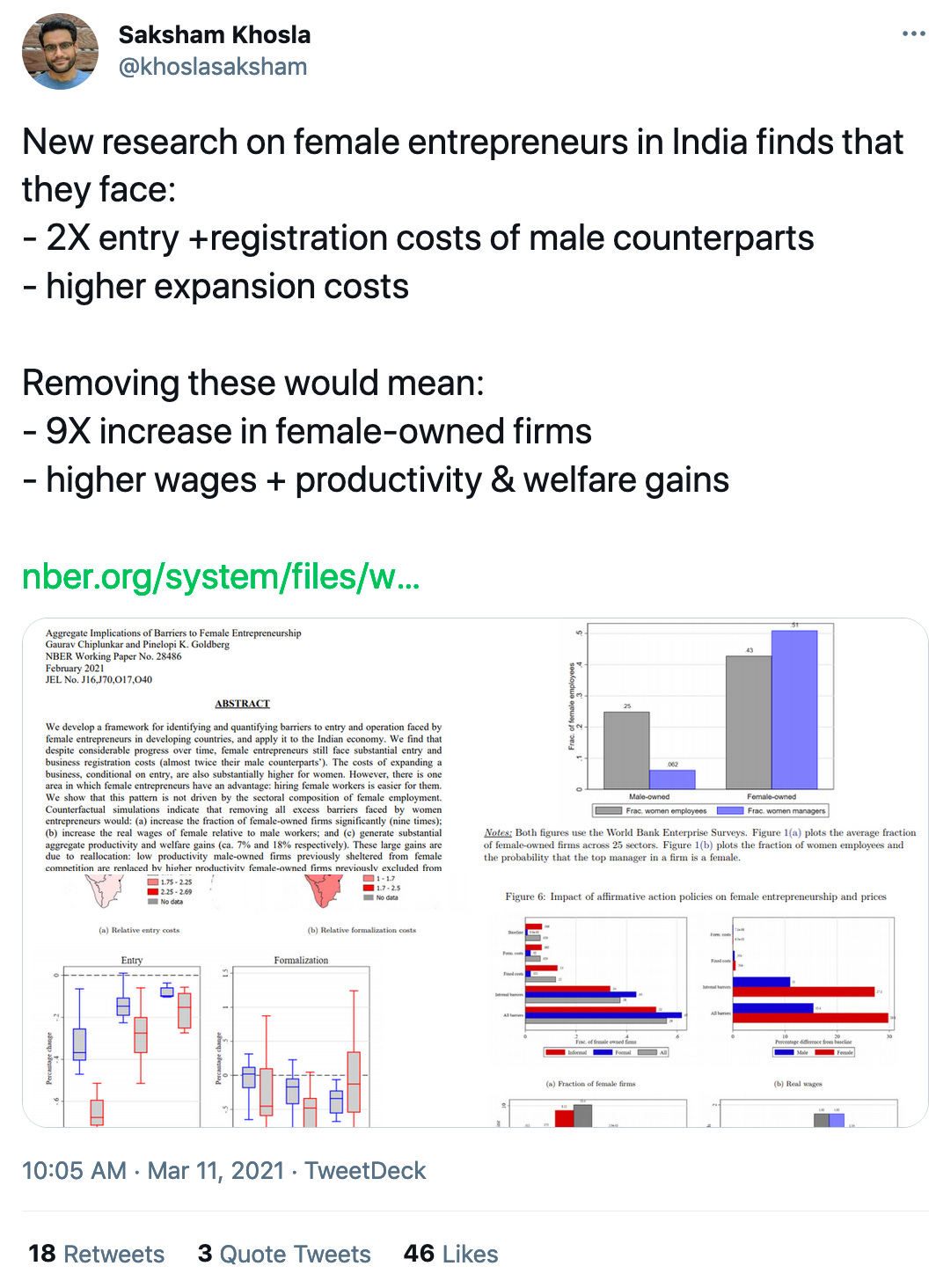Friday Links: Why the low turnout at Modi's Kolkata rally doesn't matter for the BJP, plus more election stories
And links to papers and pieces on China, female employment and more.
Welcome to The Political Fix by Rohan Venkataramakrishnan, a newsletter on Indian politics and policy. To get it in your inbox every week, sign up here.
We don’t charge for this newsletter, but if you would like to support us consider contributing to the Scroll Reporting Fund or, if you’re not in India, subscribing to Scroll+.
Election watch
As election campaigns get going in four Indian states and one union territory, our small, resourceful team will be bringing you ground reports, analysis and more. Here’s what we looked at over the last week:
Arunabh Saikia reports on the broad alliance that the Congress has stitched to take on the Bharatiya Janata Party in Assam.
“Led by the mercurial Hagrama Mohilary, the Bodo People’s Front which represents one of the largest tribal communities in Assam, was an important ally of the ruling Bharatiya Janata Party till recently. Both the parties fell out in the run-up to elections held in December for the Bodoland Territorial Council…
The party’s inclusion in the [Congress-led] grand alliance, many believe, is significant because it gives the Congress what they desperately need this election: some “indigenous” cred. “Not only in Bodo areas, this has given the Congress enough leeway to change the narrative elsewhere too,” said sociologist Chandan Kumar Sharma who teaches in Tezpur University.”
Shoaib Daniyal explains why the small turnout at Prime Minister Narendra Modi’s Kolkata rally isn’t necessarily a problem for the BJP.
“As is widely acknowledged, the BJP has the largest and most sophisticated social media network of any party in India. As Union Home Minister Amit Shah has publicly boasted the party can make any news, real or fake, go viral.
Scroll.in as part of its reporting on the 2019 election found that social media was key to the BJP’s remarkable rise in Bengal… The fact that the BJP has a strong network of sympathetic, national media houses also added to its control over the narrative in Bengal.
These factors, in fact, could be seen in play on Sunday itself. Even as much of the ground was empty, what was broadcast to the rest of Bengal and India was a narrative of a blockbuster turnout.”
To hear more voices from the ground, support the Scroll.in Reporting Fund.
Friday Links
Former Foreign Secretary Vijay Gokhale has an important new paper out that goes beyond the standard narrative on India-China relations over the last two decades, putting a special focus on how policymakers and analysts in New Delhi and Beijing approached the other country from a strategic standpoint":
“There appears to be a mismatch in identity perception on both sides. India feels frustrated because China does not give it the appropriate status as a country with regional and even global influence, although China thinks it is adopting a benign attitude because it does not identify India as a threat to China. Beijing may also think that India is seeking to benefit unduly from a life-and-death struggle that China is engaged in with the United States, although India is seeking closer ties with America for several reasons that may have nothing to do with China. Each side may also be getting locked into a self-created understanding of the internal dynamics and political behavior of the other side.”
Diego Maiorano and Ronojoy Sen put together a collection of papers that seek to explain and describe the features of Indian politics at a time when it is dominated by the Bharatiya Janata Party and Prime Minister Narendra Modi. These include Suhas Palshikar on majoritarianism, Neelanjan Sircar on the national-state election gap and more. Go read them all.
Contrary to the explanations put forward about why women employment is declining in India, Ashwini Despande argues that “Indian women are not dropping out: They are being pushed out by the lack of demand for their labour… There has been movement out of agriculture into informal and casual jobs, where the work is sporadic, and often less than 30 days at a stretch. The new modern-sector opportunities, especially in high value-added service sectors, mostly accrue to men.”
Sajjan Kumar of People’s Pulse puts a note out based on impressions of the mood in West Bengal ahead of elections over the next two months: “Based on the collation of entire field data and narratives in all the 294 Assembly Constituency, we are confident that BJP is going to win quite comfortably, its organizational weaknesses notwithstanding.”


“For the first time in recent history, the [Congress] has tasked its chief ministers with election duties to turn the corner in other states — Chhattisgarh’s Bhupesh Baghel in Assam and Rajasthan’s Ashok Gehlot in Kerala,” reports Manoj CG. “And Baghel, sources said, is replicating the Chhattisgarh model in Assam.”
Alishan Jafri and Shehlat Maknoon Wani for the Wire and Sagar for the Caravan lay bare the Hindutva mobilisation in North-East Delhi that preceded the violence of February 2020.



